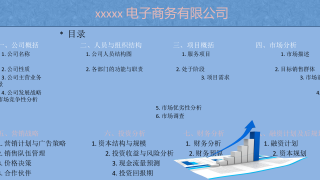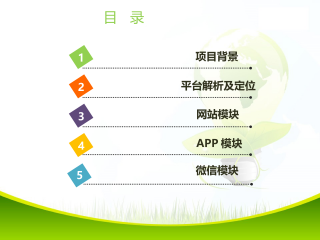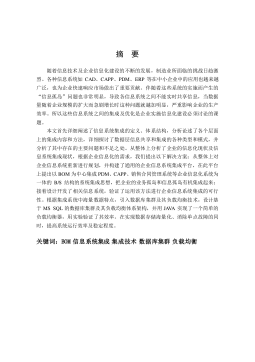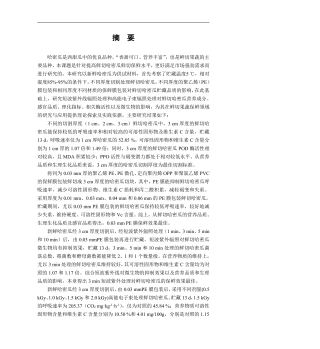英语词汇语义关系及其在词汇教学中的应用
VIP免费
Chapter 1 Introduction
1
Chapter1. Introduction
English has become the most widely used language in the world. To master English
is to gain an important tool for global communication. Therefore, English teaching and
learning has become more and more popular in domestic education. But investigations
tell us many learners have problems in their learning process especially in vocabulary
acquisition, the basic and essential part in language learning. The inadequateness of
learners’ command in vocabulary acquisition mainly lies in: great efforts but little
results in vocabulary memorizing; lack of the understanding of the real meaning of the
words taught; inability to retrieve the words that have been taught when the case of use
comes up; inability to use the appropriate word according to the situation.
1.1. Significance of This Study
Although many famous linguists have tried to deal with these problems from
different approaches, vocabulary teaching is still a big problem for us to tackle. First
let’s see what it means to “really learn” vocabulary. Carter classifies lexical competence
into five assumptions:
1) Words exist in a semantic space, knowing a word in a language involves knowing
what parts of space it occupies and what its semantic value is.
2) Knowing a word in a language means knowing both its syntagmatic and
paradigmatic relations.
3) Knowing a word in a language means knowing its limitations of use according to
function and situation.
4) Knowing words in groups of semantically related items might be encouraged as an
important stage in foreign language learning.
5) Knowing a word involves knowing its syntactic behavior.
(Ronald Carter, 1998)
From Carter’s assumptions we know that to really know a word is to know its real
meanings as well as its relations with other words. And to know the real meanings of a
word depends on an elaborate manipulation of its relations with other words including
its synonyms, antonyms, etc.
According to semantic theory, words do not exist in isolation but are related to each
other and thus form the massive word store of a language. So vocabulary is an
integrated system of lexemes interrelated in sense. We can divide the whole vocabulary
of a language up into different fields of concepts which may consist of many subfields.
Chapter 1 Introduction
2
The meaning of a word does not exist in the word itself but rather spreads over the
neighboring words, since it is the neighboring words that help pin down the meanings of
the word. In other words, the meaning of a word can only be adequately described
through its semantic relations and contrasts to other words. Probably we all have
experience that remembering words from lists that contain semantically related subsets
is much easier than remembering words from lists of unrelated words. Thus we may
suggest that meaning organizes the vocabulary and teaching vocabulary through sense
relations should be the best way to give organized access to the lexicon (Ronald Carter,
1998).
Human mind usually unconsciously takes account of such relatedness of meaning
when organizing the words of a language and store them in the brain. So it is quite
reasonable to assume that a method of teaching that takes account of the psychological
process underlying semantic relatedness must be more pedagogically efficient.
1.2. Research Background
Many researchers have studied sense relations. Herbert Reichl studies sense
relations in the book Lexical Relations, and M.Lynne Murphy researches them in the
book Semantic Relation and the Lexicon:A ntonymy, Synonymy and other Paradigms.
Grains and Redman(1986), in their well-known book Working with Words, argue that
grouping words by meaning “provide greater precision in guiding students towards
meaning, and in helping them define the boundaries that separate lexical items”. Seal
(1991) explains that when words are learned in semantic sets, “the learning of one item
can reinforce the learning of another”. All of these linguists assume that at least two
advantages in learning words in semantic set: a) can make the task of learning
vocabulary of a foreign language much easier b) can draw the attention of the learner on
the subtle distinction or relations between other words, which is essential for a profound
and complete interpretation of the meaning of the word.
In the domestic field, Chinese English linguists focus on the application of the
sense-relation theory by reproducing it in their own way. As far as the English language
instruction is concerned, the scholars resort to various methods such as the application
of collocations, the associative vocabulary instruction, the proper use of super-ordinates,
the use of proper synonyms or antonyms to achieve a particular literary style, the study
of vocabulary exercises in light of sense relations.
In this article we argue that vocabulary teaching through sense relations of words is
Chapter 1 Introduction
3
efficient and plausible. Teaching vocabulary through sense relations such as synonymy,
hyponymy, antonymy and collocation will provide a precise elaboration in the word
learning, and is highly effective in deepening the understanding of the new items as well
as facilitating the long-term retention of words.
The idea of constructing sense relations of words in English teaching is not a new
one. But the application of different theories in the different sense relation construction
accordingly is a new attempt in this area of study. Besides it is a beneficial attempt in
the design of different vocabulary exercises and activities based on the theory of sense
relations. Finally the suggestion of a synthetically pedagogical procedure in vocabulary
teaching provides a practical operating process for language teachers.
This thesis is divided into six chapters. Chapter 1 is the introduction part, in which
the idea of teaching vocabulary through sense relations is put forward and the layout of
the thesis is made. Chapter2 is the literature review, which introduces the main
theoretical basis for the application of sense relation in vocabulary teaching and the
different theories concerning different sense relation teaching. Chapter 3 is a detailed
elaboration of sense relations including synonymy, antonymy and hyponymy. Chapter 4
is the application of sense relation construction to vocabulary teaching. Chapter 5
presents a synthetical teaching approach with the application of sense relation theory.
Chapter 6 is the conclusion part of the whole paper.
Chapter 2 Literature Review
4
Chapter 2. Literature Review
This chapter deals with the findings concerning the sense relations study in the
realm of semantics. The most relevant research are worthy of a full-fledged illumination
in that their findings are important for the present study. Since this study falls into the
domain of semantics study, the literature review shall begin with a general introduction
to this division.
2.1. Theories
2.1.1. Reference, Sense and sense relations
When we talk about a word, we will be first interested in its meaning. What is the
meaning of a word? For example, the linguistic form bird is used to refer to “a creature
with wings and feathers which can usually fly in the air”. It may be believed that “a
creature with wings and feathers which can usually fly in the air” is the meaning of the
word bird. But ‘meaning’ is not as simple as it seems to be. Now we will first talk about
two important concepts in semantic study of meaning: reference and sense.
Reference means what a linguistic form refers to in the real physical world. It deals
with the relationship between the linguistic element and the non-linguistic world of
experience. In other words, reference is a matter of extralinguistic relations. “By means
of reference, a speaker indicates which things in the world (including persons) are being
talked about.”(Hurford and Heasley 1983:25). If we say “The bird is flying”, we must
be talking about a certain bird which is existent in a certain situation and which is
known to both the speaker and the hearer. This is the reference of the word “bird” in this
particular situation. Only when a connection between a linguistic sign and a referent is
established does the linguistic form of a word become meaningful. For example, the
linguistic form bird has meaning because the language user employs it to refer to “a
creature with wings and feathers which can usually fly in the air”. The referent of a
word to an object outside the language is arbitrary and conventional, which is the result
of generalization and abstraction. As we know, the word bird refers to all the animals of
the same category no matter the size, color, region, weight, etc.
Sense of a word denotes the relationship inside the language. It is concerned with
the inherent meaning of the linguistic form. It is the collection of all the features of the
linguistic form. In other words, sense is a matter of interlinguistic relations. It is the
aspect of meaning dictionary compilers are interested in. For example, in the dictionary
the definition of bird is “a creature with wings and feathers which can usually fly in the
Chapter 2 Literature Review
5
air” (Longman Dictionary Of Contemporary English, 1998) This does not refer to any
particular bird that exists in the world, but applies to any animal that have all the
features described in the definition. So this is the sense of the word “bird”.
From the above discussions of sense and reference we can know that linguistic
forms having the same sense may have different references in different situations.
Consider the following dialogues:
I hate my neighbor’s bird.
Well, I’ve just bought a lovely bird.
Obviously the two speakers are talking about two different birds.
On the other hand there are occasions when linguistic forms with the same reference
might differ in sense. A very good example is the expressions “morning star” and
“evening star”. The “star” in the two expressions differs in sense but they actually refer
to the same thing in the world.
F.de Saussure, the Swiss scholar, famous for his great work Course de Linguistique
Generale, is generally regarded as the founder of modern structural linguistics. The
central tenet of structuralism is that “every language is a unique relational structure, or
system, and that the units which we identify, or postulate as theoretical constructs, in
analyzing the sentence of a particular language (sounds, words, meanings, etc.) derive
both their essence and their existence from their relationships with other units in the
same language-system. We cannot first identify the units and then, at a subsequent stage
of the analysis, enquire what combinatorial or other relations hold between them: we
simultaneously identify both the units and their interrelations. Linguistic units are but
points in a system, or network, of relations; they are the terminals of these relations, and
they have no prior and independent existence.” (Lyons 1977a:231-232)In other words,
lexical items are not independent of each other, but related to each other and the sense
of each lexical item is meaningful and realized in the interrelation with other items.
Thus the vocabulary of a language is just like a network system.
We know that it is one of the cardinal principles of “structuralism” that every
linguistic item has its place and function in a language system, or the value of every
linguistic item lies in the different relations which it contracts with other items in the
system. To quote from Firth, “Meaning is the total network of relations or functions into
which any linguistic item enters”. And when talking about “meaning”, Quine also said,
“Words have their meaning by virtue of their place in a network.” So we can say the
Chapter 2 Literature Review
6
sense of a lexical item may be defined as identical with as well as dependent upon the
set of relations which hold between the lexical item in question and other items in the
same lexical system.
De Saussure also made the distinction between paradigmatic and syntagmatic
relations. Syntagmatic relations hold in praesentia. They hold between two or more
terms co-present in a sequence. Associative relations, on the other contrary, hold in
absentia. They hold between terms constituting a mnemonic group. As Palmer(1976)
interpreted “The paradigmatic relations are those into which a linguistic unit enters
through being contrasted or substitutable, in a particular environment, with other similar
units. Syntagmatic relations are those that a unit contracts by virtue of its co-occurrence
with similar units.” For example, in an old man and a young man,old and young are in
a paradigmatic relation to each other, while each is in a syntagmatic relation with man.
According to Carter (1987), the paradigmatic relations can be divided into synonymy,
antonymy, hyponymy, polysemy, homonymy and part-whole relation, etc. In this paper
we only focus on the most important ones: antonymy, hyponymy and synonymy. And
syntagmatic relations mainly refer to collocational restrictions. Generally there are three
types of collocations: free combinations, restricted combinations(collocations)and
idioms.
Sense relations falls into either syntagmatic or paradigmatic relation which have
their own important function respectively. The syntagmatic aspect of the meaning of a
lexical item contributes to the cohesion of a sentence or a discourse, while the
paradigmatic relation between lexical items is the basis of the field theory. Therefore the
vocabulary of a language can be visualized as a highly structured network with
interconnected nodes as different categories of lexical items.
2.1.2. Semantic Field Theory
The Saussurean structural semanticist takes the view that a semantic field is a
paradigmatically or syntagmatically structured subset of the vocabulary since the
meaning of any linguistic unit is determined by the paradigmatic and syntagmatic
relations ehich hold between that unit and other units in a language-system. (Lyons,
1977b:268) The lexical items that that are sematically related to each other fall into the
same semantic field. The most famous semantic field theory is that of Jost Trier, a
German linguist, who regards the vocabulary as an integrated network composed of
lexical items interrelated to each other in sense, and every lexical item is surrounded by
Chapter 2 Literature Review
7
the network of relations which in turn connect the lexical item with others. So to know
the meaning of a lexical item we must first compare and contrast it with other items in
the same semantic field or the items of the neighboring semantic field. Here is what
Trier says about semantic field “Fields are living realities intermediate between
individual words and the totalily of the vocabulary; as parts of a whole they share with
words the property of being integrated in a larger structure and with the vocabulary the
property of being structured in terms of small units.”
Since the whole vocabulary of a language is a huge, integrated and complex network,
it is impracticable to contrast and analyze the lexical items on this basis. It is essential
and workable to divide the whole network into smaller subfields and further divide the
smaller fields into even smaller ones until the smallest field of concept is found can we
analyze the lexical items efficiently. According to Hadumod Bussmann(2000),semantic
field theory reflects the general tendency to move from an isolating, atomistic, discrete
view to a holistic, systematic approach. The following are premises fundamental to
Trier’s semantic field theory:
1) The meaning of an individual word is dependent upon the meaning od the rest
of the words of the same lexical or conceptual field.
2) An individual lexical field is constructed like a mosaic with no gaps; the whole
set of all lexical fields of a language reflects a self-contained picture of reality.
3) If a single word undergoes a change in meaning, then the whole structure of the
lexical field changes.
Consequently, the isolated historical study of words can be superseded by the study
of lexical fields. (Hadumod Bussmann,1996:275)
Semantic field theory was further developed by John Lyons in his Semantics (1977).
According to Lyons, the sense of a word is “its place in a system of relationships which
it contracts with other words in the vocabulary”, so the whole lexical system of a
language “is to be described in terms of the sense relations holding between the lexical
items”.(Lyons,1977) He accepted the Saussurean structural semantists’ view that “the
meaning of any linguistic unit is determined by the paradigmatic and syntagmatic
relations which hold between that unit and other linguistic units in a language
system”.(1977) A semantic filed is therefore “a paradigmatically and syntagmatically
structured subset of the vocabulary”(Lyons, 1977).
According to Palmer, in almost all cases the words within a semantic field are
摘要:
展开>>
收起<<
Chapter1Introduction1Chapter1.IntroductionEnglishhasbecomethemostwidelyusedlanguageintheworld.TomasterEnglishistogainanimportanttoolforglobalcommunication.Therefore,Englishteachingandlearninghasbecomemoreandmorepopularindomesticeducation.Butinvestigationstellusmanylearnershaveproblemsintheirlearning...
相关推荐
-
跨境电商商业计划书模版VIP免费

 2025-01-09 27
2025-01-09 27 -
跨境电商方案范文VIP免费

 2025-01-09 14
2025-01-09 14 -
创业计划书VIP免费

 2025-01-09 18
2025-01-09 18 -
xx生鲜APP计划书VIP免费

 2025-01-09 12
2025-01-09 12 -
跨境电商创业园商业计划书(盈利模式)VIP免费

 2025-01-09 8
2025-01-09 8 -
跨境电商计划书VIP免费

 2025-01-09 13
2025-01-09 13 -
绿色食品电商平台项目计划书VIP免费

 2025-01-09 22
2025-01-09 22 -
农产品电子商务商业计划书VIP免费

 2025-01-09 8
2025-01-09 8 -
农村电商平台商业计划书VIP免费

 2025-01-09 13
2025-01-09 13 -
生鲜商城平台商业计划书VIP免费

 2025-01-09 21
2025-01-09 21
作者:陈辉
分类:高等教育资料
价格:15积分
属性:65 页
大小:491.32KB
格式:PDF
时间:2024-11-19






